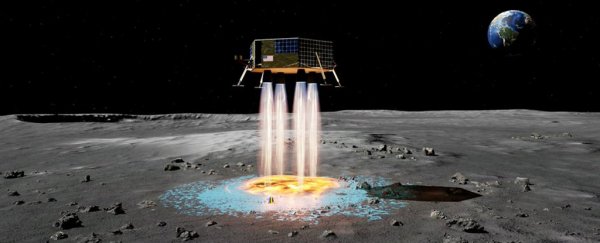One of the projects from the grants given out by NASA’s Institute for Advanced Concepts (NIAC) is taken by a team with the name of Masten Space Systems that is supported by Honeybee Robotics, Texas A&M, and the University of Central Florida has brought a mechanism that can allow the lunar lander to make its own landing pad while it’s descending.
Lunar dust creates problems for landers as it can damage the base of the lander and other paraphernalia. If a launching pad is used here, it can provide a safe and stable space for the landers to land on.

At present, the calculated estimate of making the lunar pad in a conventional way is around US$120 million. Also, there is no precedence of a lunar pad so how will the materials be used? Masten’s proposal fixes these issues.
The idea is to add solid pellets into the rocket exhaust that would allow that material to partially liquefy and deposit onto the exhaust’s blast zone, potentially hardening it to a point where dust is no longer a factor as it is encapsulated in a hard external shell. Masten believes they can find the right material for this purpose.
The physical properties of the additive pellets will determine the viability of the project. Any additive with too much heat tolerance wouldn’t melt appropriately in the rocket exhaust, essentially bombarding the surface with tiny bullets. Contrarily, additives with too little heat tolerance could be completely melted by the rocket exhaust and vaporized into a wasted cloud.

Masten has created a two-tiered system, with relatively large (0.5 mm) alumina particles to create a base layer of 1 mm of the melted lunar surface mixed with alumina.
Then, as the lander got closer to the base layer, the additive would switch to a 0.024 mm alumina particle, which would deposit at 650 m/s onto the base layer and create a 6 m diameter landing pad that would cool in 2.5 seconds.
It sounds amazing but it is too soon for it to be implemented. The NIAC grant wants them to make this deposit-able landing pad idea to be in a phased approach. Most of Phase I, which has just been completed, focused on proving the idea is feasible.


